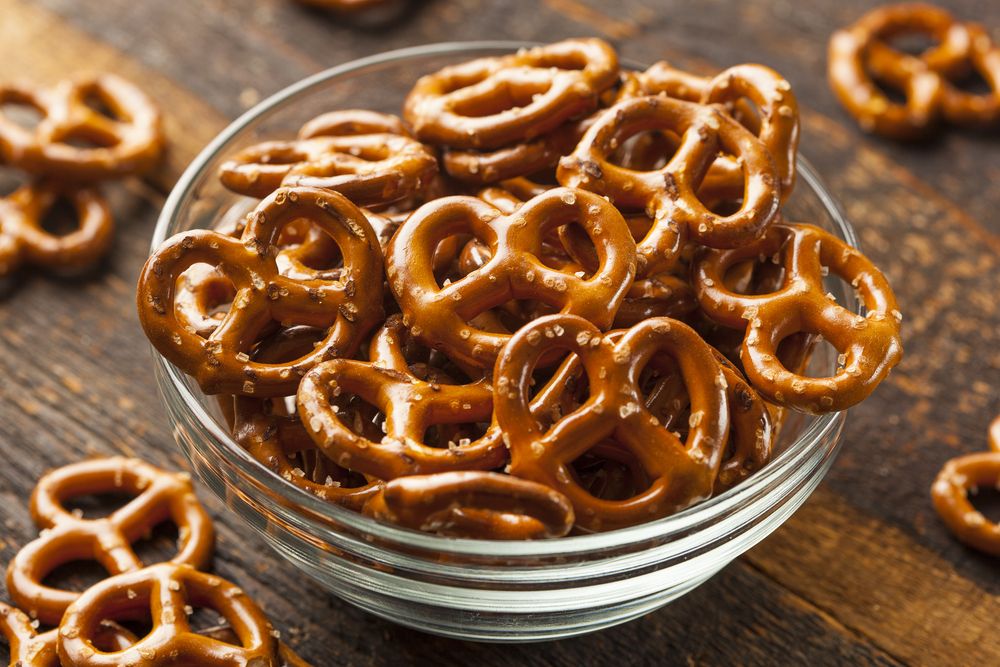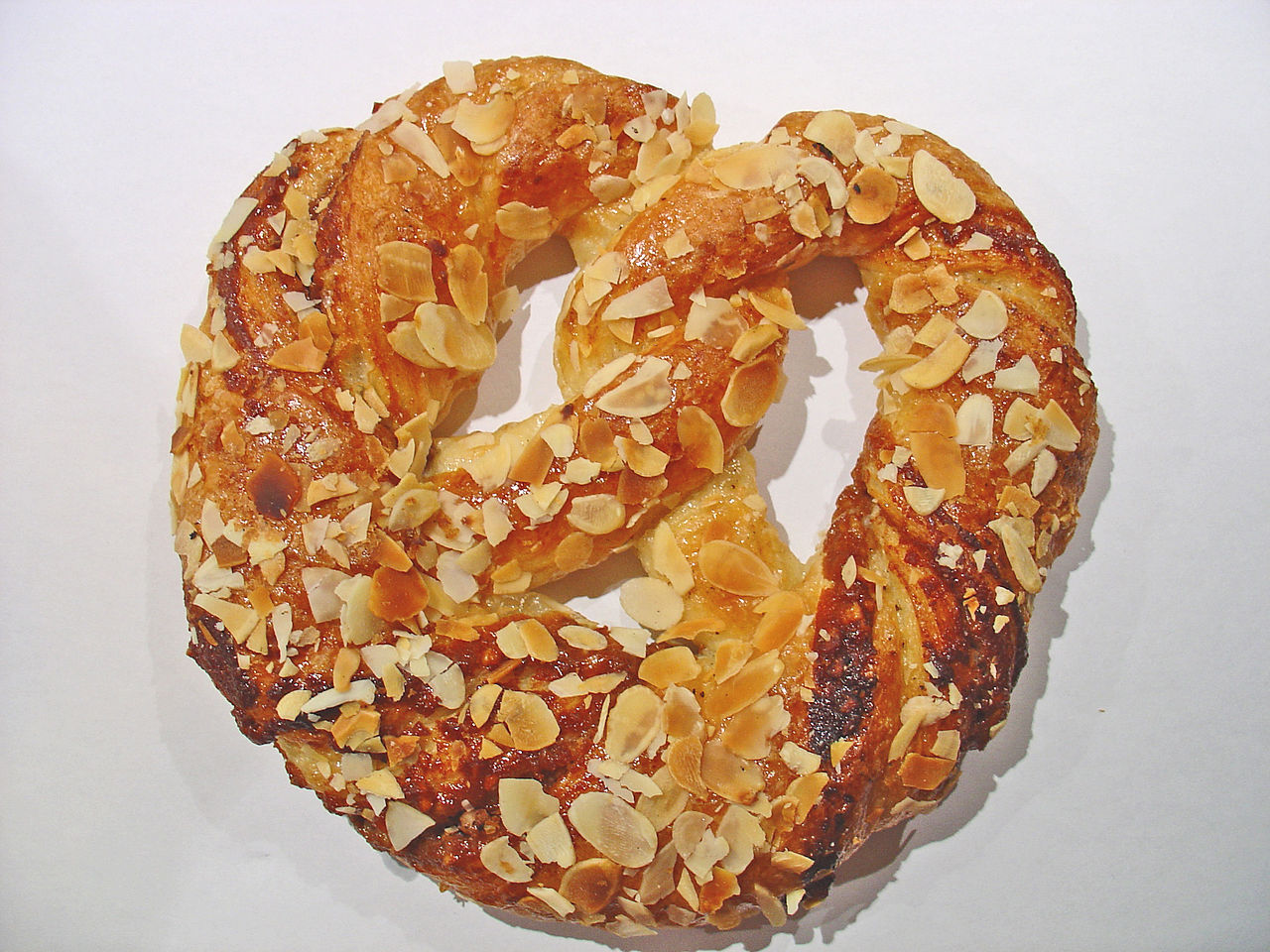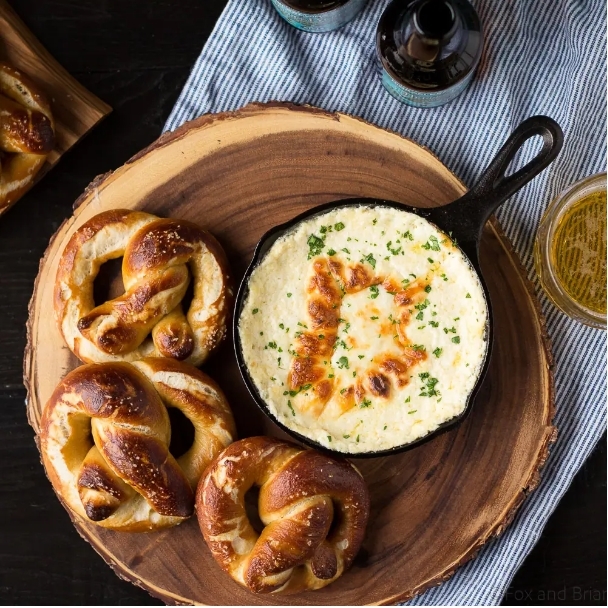The Fascinating Story of Pretzels: From Monasteries to Mainstream
Soft pretzels are old European baked pastries made from a simple dough, typically in a specific knot shape. The traditional symmetrical shape is created by interlacing the ends of a long dough strip and twisting it back onto itself, creating a unique loop.
The shape has been an important part of its identity, even used as an emblem for bakers across southern German areas and all of Europe. However, you can find them in a wide variety of shapes these days. Today pretzels are available in various forms, including soft and hard.
If you are curious to learn more about this pastry and find out how the traditional soft versions evolved into more crunchy varieties we have today, keep on reading.

Soft Pretzels, From Germany to Pennsylvania
Pretzels were enjoyed by Bavarians and other southern Germans for hundreds of years. When Germans started to move from those areas to America in the 1700s, they brought the recipe with them. A lot of these immigrants settled in Pennsylvania’s Susquehanna Valley and became known as the Pennsylvania Dutch (distorted from the word “Deutsch,” meaning German).
In addition to the Pennsylvania Dutch, Italian bakers in Philadelphia (Pennsylvania’s largest city) also learned how to make the snack, and peddlers selling them from carts became a familiar sight on city streets. Soon, delicious soft pretzels became a staple in many local bakeries.

Hard Pretzels, From Pennsylvania to the World
The new treat remained a regional delicacy for many years until a baker named Julius Sturgis opened the first bakery solely dedicated to pretzels in Lititz, Pennsylvania, in 1861. Like everyone else, he produced the soft version of this delicacy at first but soon realized that they tended to become stale quickly.
The short life span made it really challenging to transport them over long distances. It also meant they had to be sold quickly; otherwise, they would go to waste. That’s when hard pretzels were developed. Sturgis made a crunchy, cracker-like version, either by accident (overbake) or intentionally (reducing water).
Whichever might be the case, hard pretzels, packed in an airtight container, proved to have an extended shelf life and could be mass-transported almost anywhere. They could also be attractively displayed in tin containers on store shelves.
The discovery became popular, and other entrepreneurs in the area followed suit. Ultimately, Pennsylvania became the pretzel capital of the world. It produces more than 80% of the nation’s pretzels now, mainly the hard version.

Common Toppings
The most popular seasoning is salt, complementing the washing soda or lye treatment (i.e., washed with an Alkaline solution) used to create the traditional texture and flavour. Other toppings or seasonings can include sugar, cinnamon, sweet glazes, seeds, nuts, sesame, poppy, sunflower, pumpkin, caraway seeds, bacon bits, and even chocolate.

Common Dips for Pretzels
Pretzels are undeniably one of the most versatile snacks available. The saltiness helps enhance the flavour of whatever you’re dipping it in. It can also enhance the sweetness and reduce bitterness, which makes it a useful seasoning, even for non-savory snacks. The crispiness can also add texture to foods that are soft or creamy.
When it comes to pairing them with a dip, there are no hard rules, and the options are boundless. The only thing that matters is the twisted or stick form, which requires them to be paired with something that will stick to the surface.
Here are a number of popular dips you can prepare:
- Hummus
If you’re trying to be healthy and want to avoid sugar in your snacks, Hummus might be the ultimate pairing for you. Pairing the salty crunch with this nutritious and earthy dip is always a reliable choice for snacking.
- Guacamole (guac)
Guacamole is an avocado-based dip first developed in Mexico. In addition to its use in modern Mexican cuisine, it has become part of international cuisine as a condiment and salad ingredient as well. So why not dip pretzels in it?
- Mustard Dip
With so many mustard dips available, it can be difficult to pick just one. However, there’s no denying that it’s a heavenly combination. Interestingly, the tradition of spreading mustard on pretzels dates back to the 1920s when hot dog carts sold the snack. If you ask Philadelphians, this is the right way to eat it.
- Cheese (fondue)
Cheese Fondue is a melted cheese and wine dish and a classic Swiss meal in which diners use long-stemmed forks to dip chunks of country-style bread, or pretzels in this case, into warm and gooey melted cheese.
- Chocolate (fondue)
Just like its cheesy counterpart, chocolate fondue is another perfect dip for your precious crunchy or soft pretzels.

Where Does the Shape Come From?
Hand-made pretzels are becoming increasingly rare as looping machines have taken over the job in most bakeries today. But it originally involves rolling the dough into a long strand, then pulling it outwards to create tapered ends. The dough is then twisted and seasoned using special techniques before pressing the two ends together to form the iconic knotted shape.
Many experts believe that the shape has Christian origins. Legend has it that the signature knot was invented by an Italian monk in 610 A.D., who named them “pretiola,” meaning “little rewards.” It’s been said that he formed strips of bread dough to resemble the crossed arms of praying children as a reward for those kids who succeeded in learning their prayers.
Apart from the Italian monk story, other accounts suggest that the pretzel originated in a monastery in southern France. In Germany also, there are tales of bakers creating them out of desperation while being held hostage by local officials. In fact, the word “Brezel,” which is the German for Pretzel, is thought to have come from the Latin “bracellus,” which is a medieval word meaning bracelet, or “bracchiola,” meaning “little arms.”

Regardless of the exact origins, it is clear that soft pretzels had significance in the Christian Church due to their simple ingredients and shape. During Lent, for example, when eggs, lard, and dairy products were forbidden, simple versions made with just flour and water could be eaten. Later on, they became associated with both Lent and Easter. Like Easter eggs, soft pretzels were also hidden on Easter morning and frequently consumed during the period of fasting and prayer.
Pretzels’ rich history spans centuries and across continents. From their origins as a humble food to their current status as a beloved snack, they have undergone many transformations. They’re popular and versatile, with endless possibilities for dipping, seasoning, and pairing with other foods. Both soft and hard versions remain favourite choices.


